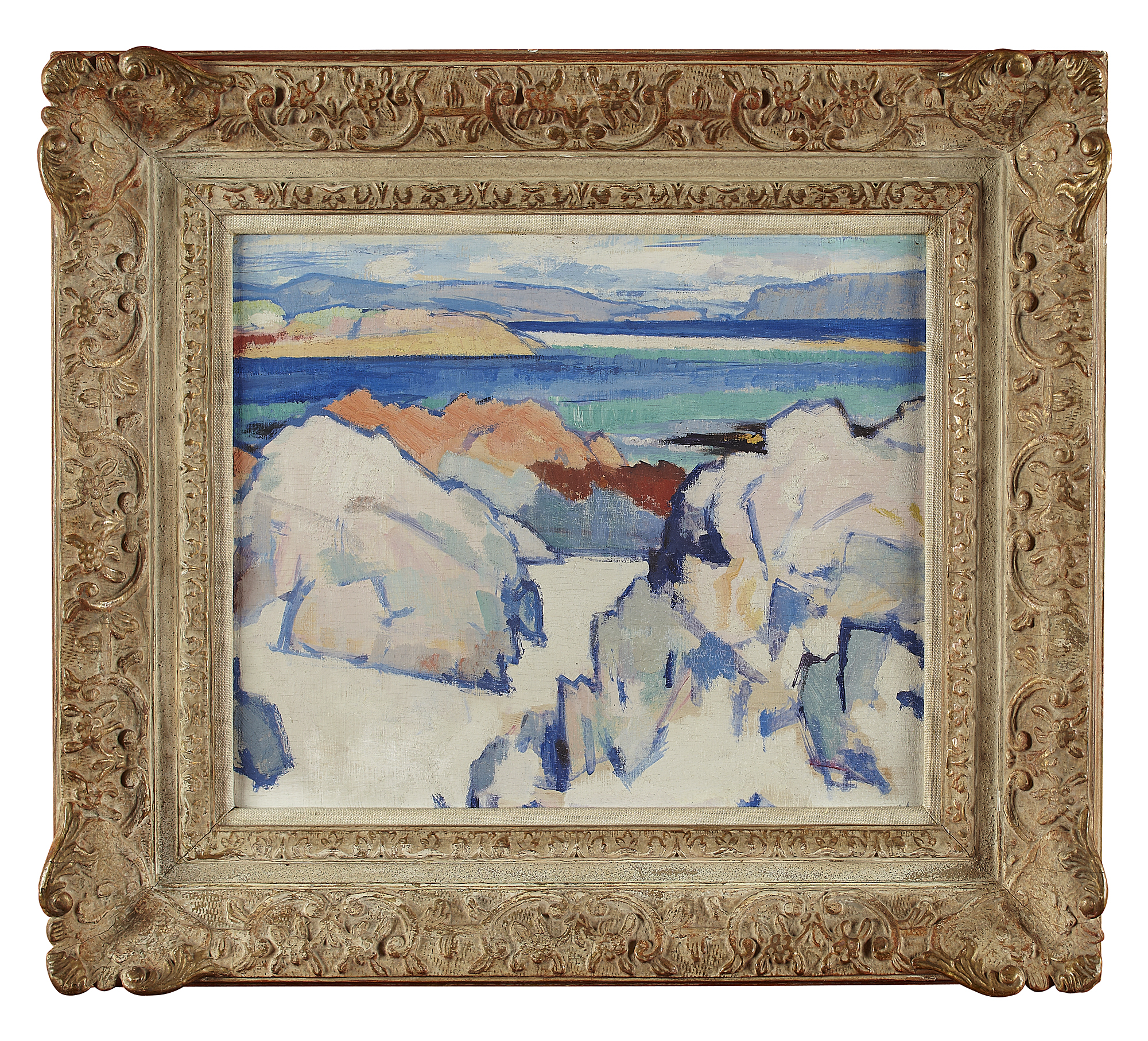SAMUEL JOHN PEPLOE R.S.A (SCOTTISH 1871-1935)
IONA
£70,000
Auction: 2 June 2011 at 19:00 BST
Description
Signed, oil on panel
Dimensions
38cm x 46cm (15in x 18in)
Footnote
For centuries a site of religious pilgrimage, the Scottish island of Iona would, in the early twentieth century, become equally important as a site of artistic pilgrimage for Colourist Samuel Peploe, becoming, for an artist so deeply influenced by Cézanne, his own 'Mont Sainte-Victoire'.1
While fellow Colourist Francis Campbell Boileau Cadell first visited Iona in 1912, Peploe's eagerly anticipated first visit would not occur until 1920. Writing to Cadell while invalided in France during the First World War, Peploe would declare that 'when the war is over I shall go to the Hebrides and recover some vision I have lost. There is something marvellous about the western seas.'2 Indeed, the jewel-coloured waters and white sands of the island would prove an artistic and spiritual sanctuary for the artist, and he would, it seems, recover that vision dimmed by the horrors of war, finding endless inspiration in the pink-hued rocks around the island's northern tip, and the shifting effect of light and tides on the sea that separates the tiny island from that of Mull.
In the present work, painted later in the artist's life, we observe the continuing influence his southern counterpart, Cézanne, had on Peploe, who delights in the angular forms of the foreground crags rising triumphantly from the white sands, leading the eye to the mellow turquoise and blue of the sea beyond. While still rich, Peploe's palette would become mellower and more contemplative in later years, and in these works, in the words of his biographer, Stanley Cursiter, there is no suggestion that:
colour was being searched for and accentuated for its own sake, but rather that the whole picture surface was a web of some rich material in which notes of colour emerge and forms take shape. This continuity of colour content seems to give to his work in these years the broad, flowing depth which one feels in great orchestral music.3
Peploe's Iona scenes proved immensely popular among collectors in his lifetime, and the island has become indelibly linked to his name. He would continue to visit the island each summer until the year of his death, working tirelessly on a much-loved subject.
1Peploe, Guy. S J Peploe 1871-1935. Scottish National Gallery of Modern Art, Edinburgh, 1985, pg. 14.
2Quoted in The Scottish Colourists 1900-1930, Scottish National Gallery of Modern Art, Edinburgh, 200, pg. 29.
3Peploe: An intimate memoir of an artist and his work. Thomas Nelson and sons Ltd, London, 1947, pg. 76.

